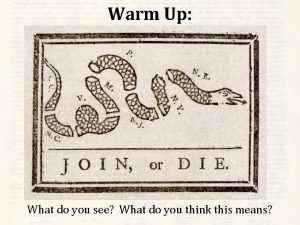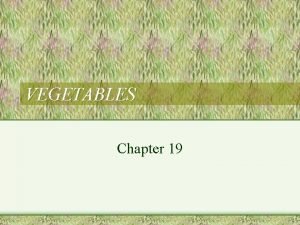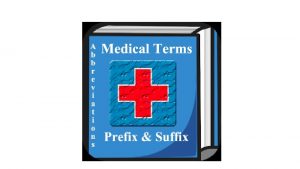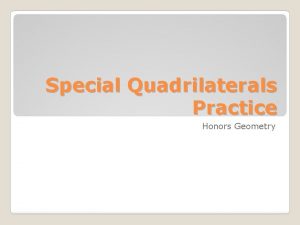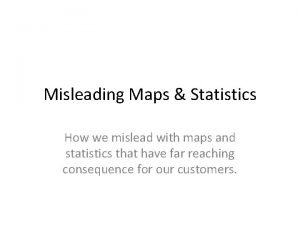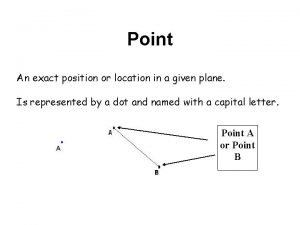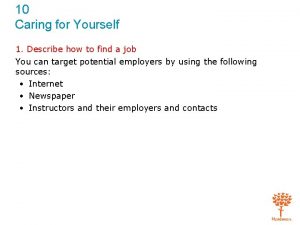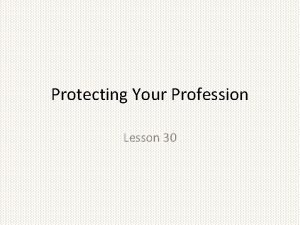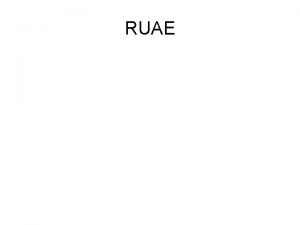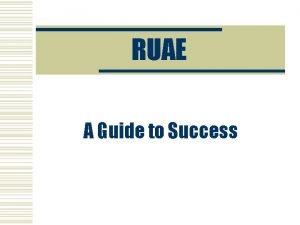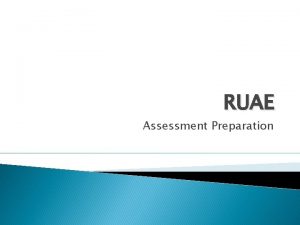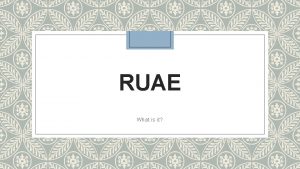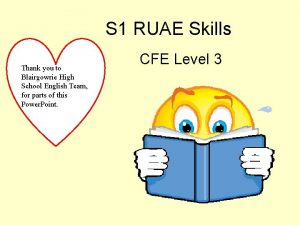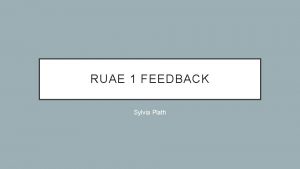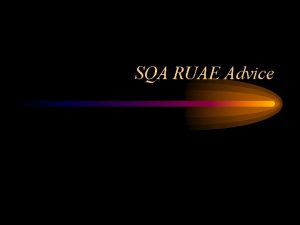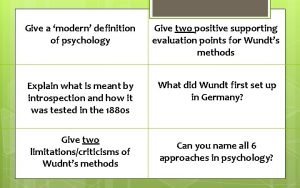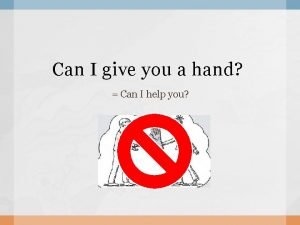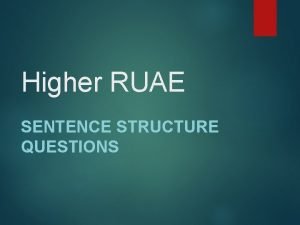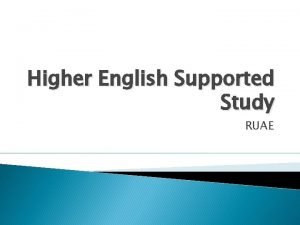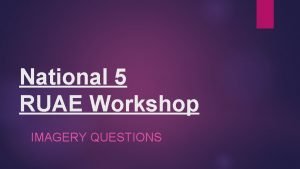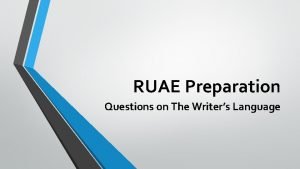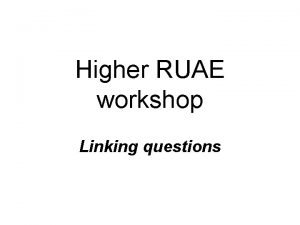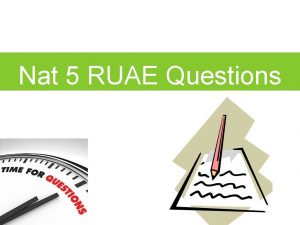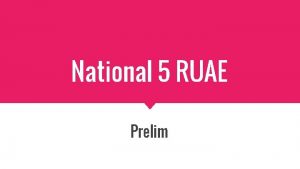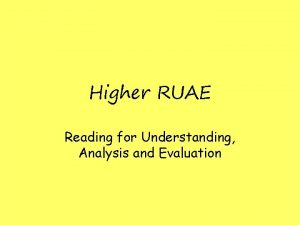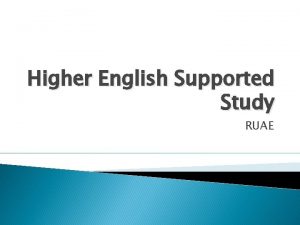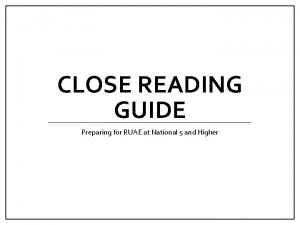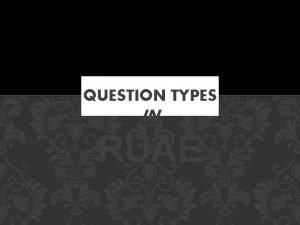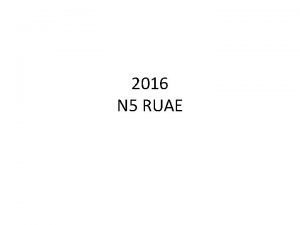RUAE Can you give a definition for each


























































- Slides: 58

RUAE Can you give a definition for each of the following? Understanding Questions Analysis Questions Evaluation Questions

Understanding Questions • Understanding questions are all about showing you have understood what the writer is getting at. • You might identify certain information. • You must use your own words to explain both denotation and connotation. • You must infer information or meaning, showing you understand what is occurring. • Inference can often be detected from factual clues, word-choice connotations, imagery connotations. • You may quote from the article, but ALWAYS use your own words to explain. You don’t have to change EVERY word – common sense will dictate that some words have to stay the same! • Always pay CAREFUL attention to the mark scheme – it’s a good guide. • You don’t need to write in full sentences – you can use bullet point lists.

Key Terms DENOTATION: The literal meaning of a word – the dictionary definition. CONNOTATION: What ideas are invoked; associated emotional or cultural ideas that can be implied by a word.

Denotation and Connotation WORD DENOTATION CONNOTATION infant The young of the species. A sort of social description; marks out a small number of the human race. Often used in statistics. baby The young of the species. A much more personal term, suggesting affection, closeness, vulnerability. neonate The young of the species. Medical terminology for a new born.

Understanding Questions Meaning and context questions are usually worth 2 marks – 1 mark for showing what the word means and 1 mark for showing how you worked it out from the context. You therefore structure your answers. . “The word/expression “____” as used here means_____. This can be understood from the context because. . . ”

Understanding Questions Working in pairs, produce answers on your whiteboards to the following questions.

Understanding Questions Read paragraph (i) of “Red hair is a beacon in a sea of mediocrity” 1 (a) Using your own words, give two reasons why the writer believes criticism of redheads is unjustified. (2)

Understanding Questions Read paragraph (i) of “Red hair is a beacon in a sea of mediocrity” 1 (b) What is the meaning of 'stigma'? How did the context help you work this out? (2)

Understanding Questions Read paragraph (i) of “Red hair is a beacon in a sea of mediocrity” 1 (c) What does the expression 'entrenched prejudice' suggest about the public's view of male redheads? (2)

Understanding Questions Read paragraph (i) of “Red hair is a beacon in a sea of mediocrity” 1 (d) Explain in your own words what the writer means by 'gingerism‘ (2)

Understanding Questions Read paragraph (ii) of “Red hair is a beacon in a sea of mediocrity” 2 (a) Using your own words, explain why the writer believes 'the fear of red lives on'. (2)

Understanding Questions Read paragraph (ii) of “Red hair is a beacon in a sea of mediocrity” 2 (b) Explain in your own words why a 'coppery thatch was a convenient shorthand for viewers' in the selection of Damien Lewis for this particular role. (2)

Understanding Questions Read paragraph (iii) of “Red hair is a beacon in a sea of mediocrity” 3 (a) What does the expression 'a flaring beacon in a sea of mediocrity' suggest about the writer's view of red-haired people? (2)

Understanding Questions Read paragraph (iii) of “Red hair is a beacon in a sea of mediocrity” 3 (b) In your own words, suggest what the writer means by claiming that redheads will 'soon be dyed out of existence'. (1)

RUAE What literary technique is being used here? 1. She's as light as a feather. 2. And the moonbeams kiss the sea. Simile Personification Metaphor 3. He's a millstone round her neck. Hyperbole 4. Your bag weighs a ton. 5. Splash! Onomatopoeia 6. And crumbling thunder of seas. Assonance 7. Peter Piper picked a peck of pickled peppers. Alliteration

ANALYSIS • As suggested by the very name – you need to analyse! • You identify a particular technique or language feature: – – – Imagery Word Choice Sentence Structure Tone Structure • Sometimes a question will name a specific feature, eg “Show the writer uses imagery. . ” • Sometimes it doesn’t and you have to decide for yourself, eg “Show the writer’s use of language. . ”

ANALYSIS • Remember – you SHOW a particular technique works. These are NOT questions where you show understanding by explaining the meaning of words. • You do not get marks for merely identifying a particular quote or technique. You need to ANALYSE and EXPLAIN how it creates a particular effect. • Underline key words in the question, to keep you tightly focused on correctly answering. • Make sure you are clear on HOW MANY features the question is asking you to identify.

ANALYSIS Remember the following: 1. LOCATE the relevant words of phrases from the text. 2. IDENTIFY aspects of style or technique 3. EXPLAIN & DISCUSS in your own words the EFFECT this item is having on the readers.

ANALYSIS Imagery • A picture in words. Remember the 6 imagery terms. • Simile, metaphor, personification, symbolism. • First of all quote, then explain the root of the image and what it is being compared with. • Discuss what the two things have in common and why the writer is making this comparison. • Talk about the effect on the reader and how successful this image is. • Remember – it is not enough to just to identify it or to give the meaning – you need to talk about its EFFECT to get marks.

Analysis Questions Read Extract 2 by Johann Hari: 'How to survive the age of distraction' 4 (a) Show the writer's imagery makes clear the number of books he possesses. (2) “Buried in landslides” (1) Just as people disappear in huge amounts of earth in landslides, so, too, did the writer’s friends vanish under the enormous number of his books they were carrying for him, a fact made clear by this metaphor (1).

Analysis Questions Read Extract 2 by Johann Hari: 'How to survive the age of distraction' 4 (b) How does the writer use imagery to make clear the threat to the paper book? (2) “circled by a shoal of sharks” (1) Just as a shoal of sharks crowd around their intended victim prior to its slaughter, so, too, are physical books being increasingly threatened by the encroaching sale of e-books as shown by this metaphor (1). . . or. . . . “being gored” (1) Just as a gored animal is one who has been seriously wounded to the point of death, so, too, are physical books being threatened by the closure of bookshops and libraries as illustrated by this metaphor (1).

Analysis Questions Read extract 3 by Chloe Veltman: “The passion of Morrisey” 5 (a) How does the writer use imagery to suggest that the 'tough-looking twenty-somethings' are not as tough as they appear? (2) “Like blushing bridesmaids” (1) This simile suggests the outward toughness of these people does not fool / impress the writer, seeing them behaving more like embarrassed young girls than the hard men they are presenting themselves as (1)

Analysis Questions Read extract 3 by Chloe Veltman: “The passion of Morrisey” 5 (b) Identify and explain the imagery by which Veltman makes clear the strength of the fans' 'devotion'. (2) “Like lepers begging for a miracle” (1) Just as lepers in olden times were desperate to touch a faith healer for hope of a miraculous cure, the simile demonstrates how the fans, too, were similarly driven to get close to their idol, as if their very lives depended on it (1).

ANALYSIS Word Choice • Talk about denotation and connotation. • Denotation – the dictionary definition. • Connotation – the implied meaning – what emotional impact or effect does the word have? • Quote the word / words / phrase and then break it down and analyse the connotations. • WHY did the author choose THAT particular word, rather than a different word? • Eg: Think about hyperbole.

Analysis Questions Read extract 4 by Hadley Freeman: “Why You Can Never Look Good In A Fur Coat ” 6 (a) Show the writer’s word choice alerts you to her contempt for the wearers of fur. (2) “disgusting” (1) – suggests that she looks down on the wearer with scorn (1) “complete moron” (1) – suggests that the wearer is seen as a total idiot by the writer (1) “waste time” (1) – suggests that discussion with the wearer is wholly pointless (1)

ANALYSIS Sentence Structure / Punctuation • Read the handout. • You identify the technique being used. • You then comment on the effect that it has and why the writer has included it. • Remember – you get no marks for just identifying a technique – you need to analyse and comment on it, especially the effect on the reader, intended by the writer.

ANALYSIS Sentence Structure / Punctuation 1. Punctuation and Lists 2. Length of Sentence 3. Use of Climax or Anti-Climax 4. Repetition 5. Word Order (remember “inverted syntax” – Yoda-speak!) Memorise this list!

Analysis Questions Read extract 5 by Robert Westall: “Yaxley’s Cat” 7 Look at the sentence beginning “At first it had pumped evil rusty stuff. . ” How does the sentence structure create an impression of uneasy thoughts rushing through Rose's mind? (2) It uses quite a few conjunctions ('and' and 'but') and has a long list of possible problems. It breaks off at the end with dots (ellipsis) rather than a full stop – making it seem like there are even more problems not already mentioned. It is made up of a series of short sections which are only loosely connected – this makes her thoughts seem disorganised.

Analysis Questions Have a go at the four Sentence Structure / Punctuation extracts on your worksheet handout.

Tone What different tones of voice can you think of? Write down as many as you can.

ANALYSIS Tone (also, read the handout) • Try to imagine what it would sound like if someone were to read the article out loud. What tone of voice would you hear? Which words would be emphasised? • Make sure you give the REASON and JUSTIFICATION for your choice, otherwise you will lose marks. Back up your answer with evidence and analysis. You should: 1. Identify the tone. 2. Provide some quotes as evidence. 3. Comment about its effect.

Tone Add the following to your bank of different tones. It is not an exhaustive list! Angry Questioning Persuasive Ironic Serious Sarcastic Humorous Pleading Mock-serious Disappointed Playful Frightened Unsure Resentful Thoughtful Shocked Tongue-incheek Optimistic Bitter Sentimental Selfdeprecating Doom-laden Hectoring Sceptical

Tone It is important to recognise and comment on the tone of a piece – it reveals the attitude of the writer. It could be PERSONAL or IMPERSONAL: • The writer’s personality / personal experience come across strongly. • “I” may occur. • The writer’s thoughts / feelings expressed.

Personal Dear Julie, How are you? I just have to tell you about my holiday! What a disaster! I thought it would never end – you would have laughed your socks off at what happened. What an idiot I was!

Tone It is important to recognise and comment on the tone of a piece – it reveals the attitude of the writer. It could be PERSONAL or IMPERSONAL: • Will not reveal anything about the writer. . • . . . or their own feelings. • Likely to concentrate on facts / information.

Impersonal The Ming dynasty of China was established in 1368 by Chu Yuan Chang. It lasted until 1644 when it was superseded by the rule of Manchus.

Tone It is important to recognise and comment on the tone of a piece – it reveals the attitude of the writer. It could be FORMAL or INFORMAL: • Often uses complex sentences. • Usually in detached 3 rd person. • Complex vocabulary, avoiding contractions (“it is” rather than “it’s”). • Often a more objective viewpoint.

Tone It is important to recognise and comment on the tone of a piece – it reveals the attitude of the writer. It could be FORMAL or INFORMAL: • Colloquial language – a “chatty” style. • Simple structure of sentences. • Simple vocabulary. • Use of contractions and abbreviations. • More empathy than a formal style. • Use of 1 st, 2 nd or 3 rd person.

Tone of Voice In your groups, take it in turns to (secretly!) choose one of the tones of voice from the table. Without telling anyone what it is, say in your chosen tone: “You ate the last piece of chocolate cake” Can the others in the group guess which tone you chose?

Analysis Questions Analyse the tone. . “And there I was banging on about my cash problems and her with a Heinz beans box to doss down in. Nuff said. Sign of the times. ” Chatty / informal / colloquial / personal : short sentences, first person pronouns, slang expressions.

Analysis Questions Analyse the tone. . “Bring three pieces of identity with you, a letter of recommendation from your headteacher, a full CV, the form filled-in in triplicate and a cheque for £ 150. You have to admit it, they don't ask much. ” Informal / ironic / tongue-in-cheek: Saying the opposite of what is meant (the last sentence).

Analysis Questions Analyse the tone. . “Wearily, she laid the Asda bag down on the park bench, grateful that she was at least half-way home. Would she make the last gruelling mile, she asked herself? Hauling her frail form up from the bench, she tottered unsteadily on. ” Emotive: Use of words which stir up strong emotions such as wearily, gruelling, hauling, frail, tottered unsteadily. More formal than informal. Impersonal.

Analysis Questions Analyse the tone. . “With more than 75 years in the travel business, we pride ourselves on our standing in the industry. 75 years of returning customers point to a service which is second-to-none. A reputation like ours is immensely difficult to come by, that is why we go the extra mile to ensure that our customers keep coming back. With us, many happy returns are not just for birthdays!” Persuasive: Using comparatives / superlatives, words highlighting excellence, suggesting trustworthiness. Begins formally, ends informally.

Analysis Questions Analyse the tone. . “The last time I saw legs that thin, there was a message tied round them. And talking of pigeons, his chest was so concave I fully expected to see feathers on it. ” Sarcastic / humorous: Use of exaggeration or series of exaggerations (hyperbole), telling jokes. Informal, personal.

ANALYSIS Other techniques to look out for. . . 1. 2. 3. 4. 5. 6. Point of View Contrast Use of questions / rhetorical questions Use of anecdote (narrative story to prove a point) Use of examples / illustrations Sound (alliteration, rhyme, rhythm etc) As always – it’s not enough to merely identify these – you need to comment on the effect!

ANALYSIS REMEMBER: 1. Make a statement which answers the question 2. Provide evidence from the text to back up your statement. 3. Make a comment which links your evidence with the statement. 4. Analyse and talk about the effect on the reader

LINK QUESTION • The link question designed to assess your understanding of how writers link similar or opposing points together in a way that helps the flow of their argument. The question might ask you to show a sentence provides an effective link between two paragraphs or ideas: 1. Identify and write down the link word or phrase and explain that it shows a change in direction of the writer’s argument (hint: look for key marker words like “however” and “but”) 2. Quote the part of the sentence which refers back to the earlier topic and explain, in your own words, what the earlier topic is. 3. Quote the part of the link sentence which looks forward to the next topic and explain, in your own words, what that new topic is.

LINK QUESTION Show the underlined sentence acts as a link in this argument. . . ‘William Shakespeare is easily the best-known of our English writers. Virtually every man in the street can name some of his plays and his characters, and many people can also recite lines of his poetry by heart. However, despite our familiarity with his work, we know relatively little of the man himself. We do not know when or why he became an actor, we know nothing of his life in London, and almost nothing of his personal concerns. ’

LINK QUESTION nd Referring to specific words or phrases, show the 2 “blame” refers to the claim in paragraph acts as a that link between the other 2 paragraphs. the first paragraph supermarkets selling alcohol cheaply is why so many pubs have closed. “doesn’t quite add up” introduces the idea that, according to the writer, there is a flaw in their argument, which he exposes in the next paragraph.

Which is the most / least effective and why?

EVALUATION

EVALUATION • Evaluation questions ask you to evaluate how successful the writer has been in using particular techniques – this is YOUR opinion. • Evaluation questions ask you to evaluate how successful the writer has been in achieving the purpose of the writing. • Be careful – most evaluation questions involve analysis as well – this is because you can’t discuss the effectiveness of an image without first analysing it. • Underline the key words in the question.

EVALUATION 1. Identify the image 2. Analyse it, identifying literary techniques at work 3. Explain the intended effect the writer wants to have on the reader 4. Then evaluate its success. . – “This is very effective because. . . ” (perhaps it persuaded you to their point of view) – “This is not very effective because. . . ” (perhaps the image was too clichéd and over-used)

EVALUATION • Usually the writing you are being asked to comment on has been chosen for its excellence in the eyes of the person setting the paper. It MAY be therefore easier to argue that a passage IS effective. • However, if you wish to make a negative evaluative comment, you are perfectly at liberty to do so! But be very careful. You will need to back up your comment with convincing evidence from the text and a soundly argued case. An exam in no place to air private prejudices!

EVALUATION • REMEMBER. . . . • It is NOT enough to merely identify and analyse the technique being used. • You must discuss HOW EFFECTIVE a technique is and the effect it might have on a reader. • Include your own opinion – backed up with evidence. • Were the writer’s original intentions successful?

EVALUATION Some sample evaluation questions. . Show an aspect of. . conveys the writer’s sense of. . . Refer to an example of word choice or imagery used to convey. . . and comment on its effectiveness. Explain why the expression. . . effectively illustrates our relationship with. . . How effective do you find the writer’s use of imagery in lines 20 -24 in conveying the impact of technology? How effective do you find the writer’s use of language and structure in the final paragraph as a successful conclusion to the passage as a whole?

The “SUMMARISING” Question • You might be asked to summarise key points of the article. • Make sure you CLEARLY understand specifically what you are summarising (ie don’t just summarise the whole article – it needs to summarise whatever aspect is mentioned in the question). • Decide what the key ideas are – then paraphrase, putting them into your own words. • Perfect opportunity for a bullet point list! • Pay careful attention to the mark scheme. • Avoid literary techniques (eg talking about metaphors etc). This is about UNDERSTANDING and SUMMARISING (not analysing).

The “SUMMARISING” Question Read Extract 6. In your own words, explain fully how Black & Blue was a 'breakthrough' in Rankin's fiction. (4) • More tightly-woven narratives. • A greater interest in everyday public concerns. • The novels which followed this book also broke new ground, especially regarding ethical concerns. • These social and ethical concerns had been present before in his work, but never so centrally as here, when dealing with the shutting down of an oil platform.
 If you think you can you can poem
If you think you can you can poem If you can imagine it you can achieve it
If you can imagine it you can achieve it If you can't measure it it does not exist
If you can't measure it it does not exist If you can’t measure it, you can’t manage it
If you can’t measure it, you can’t manage it If you don't measure it you can't manage it
If you don't measure it you can't manage it Liquide mittel
Liquide mittel I give myself away song
I give myself away song What is the main idea of give me liberty or give me death
What is the main idea of give me liberty or give me death Personal information describe the important person
Personal information describe the important person How can you classify each vegetable?
How can you classify each vegetable? Simplifying nonperfect roots quizlet
Simplifying nonperfect roots quizlet Give the most descriptive name for each quadrilateral
Give the most descriptive name for each quadrilateral You can tell harris about it just ____(easily) as i can.
You can tell harris about it just ____(easily) as i can. You can tell harris about it just ____(easily) as i can.
You can tell harris about it just ____(easily) as i can. Positive comparative superlative
Positive comparative superlative Through you blind eyes are open
Through you blind eyes are open Give one or two examples of how maps can be misused.
Give one or two examples of how maps can be misused. A point is an exact
A point is an exact Chapter 10 caring for yourself
Chapter 10 caring for yourself The best response an na can give to hostile criticism is
The best response an na can give to hostile criticism is Pla programmable logic array
Pla programmable logic array Formuö
Formuö Typiska drag för en novell
Typiska drag för en novell Nationell inriktning för artificiell intelligens
Nationell inriktning för artificiell intelligens Returpilarna
Returpilarna Shingelfrisyren
Shingelfrisyren En lathund för arbete med kontinuitetshantering
En lathund för arbete med kontinuitetshantering Adressändring ideell förening
Adressändring ideell förening Personlig tidbok fylla i
Personlig tidbok fylla i Anatomi organ reproduksi
Anatomi organ reproduksi Densitet vatten
Densitet vatten Datorkunskap för nybörjare
Datorkunskap för nybörjare Tack för att ni lyssnade bild
Tack för att ni lyssnade bild Debattartikel struktur
Debattartikel struktur Autokratiskt ledarskap
Autokratiskt ledarskap Nyckelkompetenser för livslångt lärande
Nyckelkompetenser för livslångt lärande Påbyggnader för flakfordon
Påbyggnader för flakfordon Vätsketryck formel
Vätsketryck formel Publik sektor
Publik sektor Kyssande vind analys
Kyssande vind analys Presentera för publik crossboss
Presentera för publik crossboss Jiddisch
Jiddisch Plats för toran ark
Plats för toran ark Klassificeringsstruktur för kommunala verksamheter
Klassificeringsstruktur för kommunala verksamheter Epiteltyper
Epiteltyper Claes martinsson
Claes martinsson Centrum för kunskap och säkerhet
Centrum för kunskap och säkerhet Verifikationsplan
Verifikationsplan Mat för idrottare
Mat för idrottare Verktyg för automatisering av utbetalningar
Verktyg för automatisering av utbetalningar Rutin för avvikelsehantering
Rutin för avvikelsehantering Smärtskolan kunskap för livet
Smärtskolan kunskap för livet Ministerstyre för och nackdelar
Ministerstyre för och nackdelar Tack för att ni har lyssnat
Tack för att ni har lyssnat Mall för referat
Mall för referat Redogör för vad psykologi är
Redogör för vad psykologi är Matematisk modellering eksempel
Matematisk modellering eksempel Atmosfr
Atmosfr Borra hål för knoppar
Borra hål för knoppar







